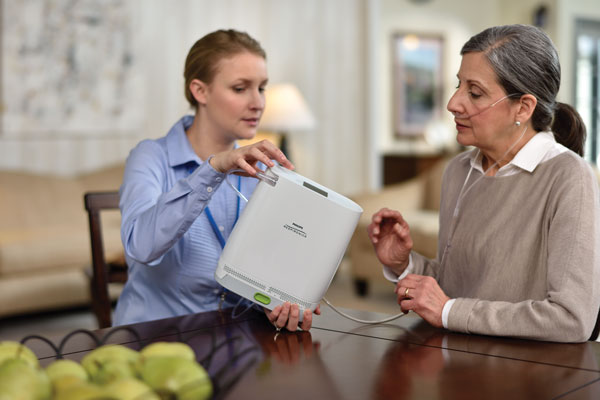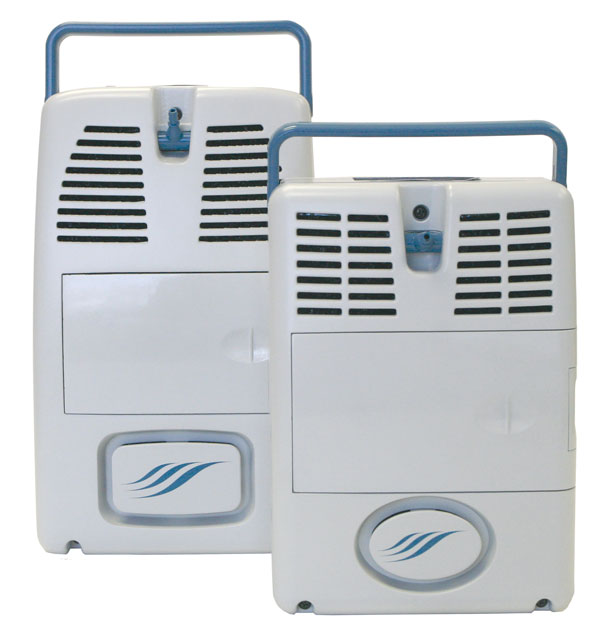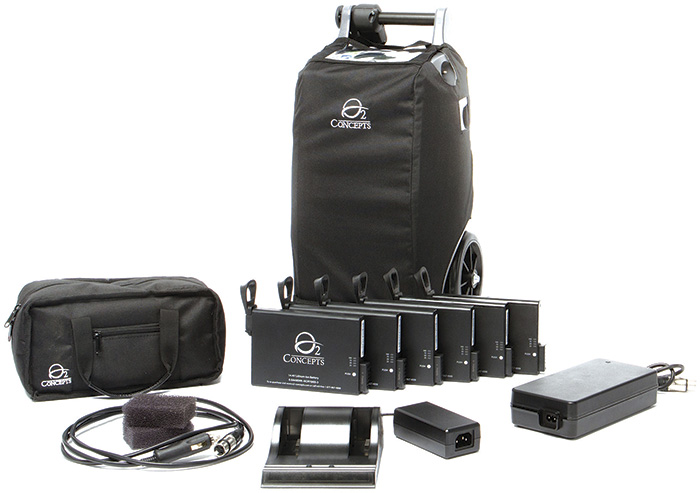Answers from industry experts
Friday, May 27, 2016
 SimplyGo POC
SimplyGo POCPhilips Respironics
Frank Lazzaro, Director of Global Product Management, Home Respiratory Care philips.com
What makes your products stand out in the industry? LAZZARO: The Philips Respironics oxygen product line includes home oxygen filling systems, stationary oxygen concentrators and portable oxygen concentrators (POC). We design our technology to be durable and quiet, so that patients can feel comfortable with their oxygen therapy and easily incorporate it into their daily lives. Where are the trends in the oxygen market this year? LAZZARO: An important trend is the frequency with which patients and their home caregivers are seeking information online about their care and medical device options. This is especiallly true for POCs. With insurance companies increasingly recognizing the high costs associated with managing COPD patients, we see a strong trend toward keeping patients active, mobile and out of the hospital. POCs are contributing to this effort, enabling COPD patients to maintain their lifestyles. Where does Philips plan to innovate this year? LAZZARO: Connecting the patient to their care ecosystem via technology has many benefits in terms of cost and quality of care. Innovation in this area contributes to improving clinical outcomes by enabling patients to remain active and helping to reduce the total cost of care. Reducing the cost of care can be accomplished in many different ways, however a reliable device is probably the most important Do you have any new products to share with us? LAZZARO: The SimplyGo Mini is a portable oxygen concentrator that we developed to address the needs of the growing population of patients who are being diagnosed earlier and lead more active lifestyles. It is small and light, making it easy for patients to take with them wherever they go. We believe it is extremely important to provide patients with solutions that enable them to live the lives they desire. How can HME businesses be more successful this year? LAZZARO: Yesterday's model most likely won't be successful tomorrow, so it is necessary for homecare providers to be open to evolving and adapting their businesses to the rapidly changing health care environment. Make good use of new technology and focus on the new models emerging from accountable care organizations, population health companies and new health care regulations. For HME providers looking to improve their bottom lines, how important are customer service, customer education and overall portable oxygen product knowledge? LAZZARO: Customer service and education is extremely important. Educated patients who feel confident in the technology they are using ask fewer questions. If they feel they understand the technology, they ultimately have increased confidence in their DME. AirSep Line of POCs
AirSep Line of POCsCAIRE Inc.
George Coppola, Director of Marketing chartindustries.com
What are your company's most prominent product lines? COPPOLA: The CAIRE portable oxygen concentrator family offers the best and widest selection of devices on the market to cover multiple respiratory disease states and prescriptions. Our product line includes the world's smallest oxygen delivery device, the AirSep Focus. What trends do you see in the industry this year? COPPOLA: The use and application of telemedicine is a growing trend in the industry, and CAIRE is responding to this through the development of the CAIRE Asset Tracking Project. The project will help providers proactively manage their fleet of portable and stationary oxygen concentrators, alert them to where and when conditions need prompt attention and help them better manage repairs. Do you anticipate any challenges in 2016? COPPOLA: The new CMS policies impact all avenues of respiratory care, and competitive bidding is clearly the biggest concern. The same challenges and concerns exist in the re-compete. For manufacturers, the challenge is simple: Take cost out of the product in exchange for performance that could potentially impact patient treatment or focus on the delivery of quality treatment options. It is imperative patients are provided with reliable products and CAIRE is committed to providing high-quality products that meet the industry needs at competitive prices. Do you have any new products coming out this year? COPPOLA: CAIRE has multiple new products in development right now, all designed to meet the demands of the market—more oxygen output, lighter weight and longer battery life, just to name a few. How can providers improve their businesses this year? COPPOLA: Home medical equipment is progressing through a typical market life cycle, requiring providers to become more efficient operators. They must focus on partnering with financially stable and reliable manufacturers that put quality first to ensure product reliability, and work with them to develop and adopt technology solutions to increase asset velocity and improve asset management. Where do customer service and patient education fit in? COPPOLA: Customer service and patient education are imperative for a provider's success. Providers must be trained effectively to address any issues quickly so as to not adversely affect patient treatment. Patient education is also very important and is an area where CAIRE is committed. An educated patient will lead to better treatment outcomes. OxyGo POC
OxyGo POCApplied Home Healthcare Equipment
Laura Frederick, Manager of Customer Care apllied-inc.com
Please briefly describe your company's product line related to the oxygen market. What makes your products stand out in the industry? FREDERICK: Applied has a 23-year history of driving provider costs down with innovative products and services like the OxyGo POC, OxyFill medical oxygen refilling systems, FlexRegs all-in-one oxygen regulators with 0.5 to 15 lpm settings), OxySafe oxygen firestops and online and on-site regulatory and compliance training. How are new technologies impacting the market overall, as well as results for individual customers? FREDERICK: At Applied, we believe providers can still thrive in their oxygen business with non-delivery models like OxyGo and new business opportunities like OxyFill oxygen refilling systems. Both systems dramatically reduce provider costs and expand opportunities. Financing is readily available and makes deploying a fleet of OxyGos or turnkey OxyFill installations a breeze including regulatory, accreditation and compliance issues. Are there any trends in terms of what providers are offering recently? FREDERICK: We believe there will be more providers moving to non- and reduced-delivery models to control costs and increase profitability, especially with the new round of reimbursement cuts. What is one way your company is staying competitive this year? FREDERICK: We introduced a host of new products, services and concepts all designed to drive provider costs down and efficiencies up, including opening new provider opportunities. Examples include the OxyGo POC non-delivery model, lowering medical oxygen costs through lower training costs and better compliance and OxyFill medical oxygen filling systems and training. How can HMEs stay current with modern business models that work? FREDERICK: Many providers stick with tanks, believing that they have an investment and they must utilize it. Providers should look at these assets as sunk costs and invest in the non-delivery model, which reduces costs and increases service areas. Lower costs and more patients is a great strategy. Do you feel that an HME's relationship with their customer is an important part of their business? FREDERICK: Customer service, education, and oxygen product knowledge are the best indicator of future provider profitability. However, providers can't do it alone—they have to partner with quality suppliers who have a culture of customer service, education and product knowledge. It's no secret that Applied is well known for these attributes. DNA Technology
DNA Technology